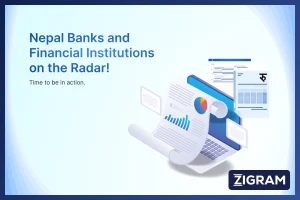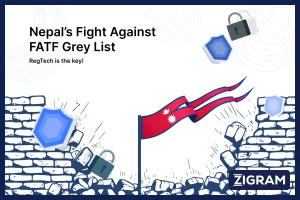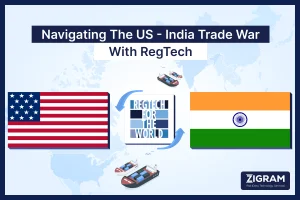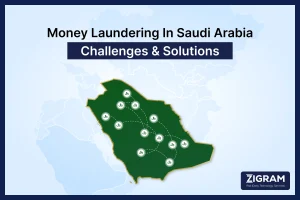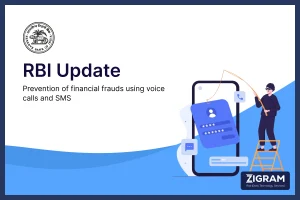Name screening has traditionally played a critical role in ensuring anti-money laundering compliance for banks and NBFCs in India. Over time, the success of this technology and process has motivated other regulators to leverage this approach for other purposes.
Today, watchlist screening, which is far beyond just AML name screening, plays a crucial role in ensuring the compliance of banks and financial institutions with the regulations set forth by the Reserve Bank of India (RBI), SEBI, IRDAI, TRAI, NHB, MCA and others. This involves the systematic process of cross-referencing individuals and entities against watchlists curated by various governmental and regulatory bodies to identify and prevent potential financial crimes such as money laundering, terrorist financing, fraud, and other illegal activities. For banks and financial institutions operating in India, adhering to RBI norms is paramount to maintain the integrity and stability of the financial system. Watchlist screening forms an integral part of the Know Your Customer (KYC) and Anti-Money Laundering (AML) compliance programs mandated by the RBI. By screening customers against watchlists, banks can identify high-risk individuals or entities and mitigate the risks associated with financial crimes and other high-risk activities.
The watchlist screening process begins with identity verification using reliable data from multiple independent sources. Once the identity is verified, the system scans the individual or entity against various watchlists, including global and governmental ones. The India watchlists, specifically curated for the banking sector, include crucial information that helps banks and financial institutions stay compliant with RBI regulations. These watchlists may include individuals or entities involved in money laundering, terrorist financing, arms trafficking, and other illicit activities. Examples of Indian watchlists include those maintained by the Department of Foreign Affairs and Trade, the Reserve Bank of India itself, and other governmental agencies.
The significance of watchlist screening extends beyond mere regulatory compliance. It serves as a proactive measure for banks and financial institutions to safeguard their reputation and maintain the trust of their stakeholders. By promptly identifying and addressing potential risks, institutions can uphold their commitment to transparency and accountability, ultimately contributing to the overall integrity of the financial system. Thus, the role of Indian watchlists in ensuring bank compliance cannot be overstated, as they serve as indispensable tools in the fight against financial crimes.
Understanding RBI Master Direction Guidelines for AML, Sanction, and PEP Screening
The Master Direction on Know Your Customer (KYC) issued by the Reserve Bank of India (RBI) establishes a comprehensive framework for Regulated Entities (RE) to follow in their customer identification procedures. Last amended in October 2023, this directive outlines stringent requirements aimed at curbing money laundering and terrorist financing activities within the financial sector. It encompasses guidelines on customer due diligence, beneficial ownership identification, and transaction monitoring.
Compliance with the KYC Direction is paramount for regulated entities in upholding the integrity and stability of the financial system while ensuring transparency and accountability in their operations. Failure to adhere to KYC norms can result in severe penalties and regulatory actions. Thus, strict adherence to RBI’s KYC guidelines is essential for preserving the trust and credibility of the financial sector and safeguarding against illicit activities.
As per RBI guidelines, Regulated Entities (REs) encompass various financial institutions, including Scheduled Commercial Banks (SCBs), Regional Rural Banks (RRBs), Local Area Banks (LABs), Primary (Urban) Co-operative Banks (UCBs), State and Central Co-operative Banks (StCBs / CCBs), and any other entity licensed under Section 22 of the Banking Regulation Act, 1949, collectively referred to as ‘banks’. Additionally, this category extends to All India Financial Institutions (AIFIs), Non-Banking Finance Companies (NBFCs), Miscellaneous Non-Banking Companies (MNBCs), Residuary Non-Banking Companies (RNBCs), Payment System Providers (PSPs), System Participants (SPs), Prepaid Payment Instrument Issuers (PPI Issuers), and Asset Reconstruction Companies (ARCs). These directives also encompass branches and majority-owned subsidiaries of REs located abroad.
1. Guidelines Related to Anti Money Laundering Screening
Recent amendments in the Master Direction underscore the importance of AML screening in combating money laundering and financial crimes. Specifically, banks, NBFCs, and PSPs are now required to screen users against the UNSC Sanctions Lists, UAPA Sanction Lists, and politically exposed persons (PEPs) along with their relatives and close associates. This proactive screening aids in identifying individuals or entities potentially linked to terrorism and helps mitigate the associated risks of money laundering.
Furthermore, the introduction of Section 54A emphasizes the utilization of technological innovations and tools by regulated entities for effective name screening against individuals and entities suspected of terrorist links. The RBI also highlights the significance of profile-based risk assessments and periodic reassessments of onboarded users as essential best practices.
To strengthen anti-money laundering (AML) efforts, regulated entities must check their customer databases daily against specified sanction lists. Additionally:
- They must periodically assess and address money laundering and terrorist financing risks across clients, countries, services, and transactions. This assessment should consider all relevant risk factors & vulnerabilities shared by regulators.
- The risk assessment must be documented and tailored to the entity's size, geographical presence, and complexity. It should be reviewed annually and shared with the Board or relevant committee.
- Results should be shared with competent authorities and self-regulating bodies.
Regulated entities must use a Risk Based Approach (RBA) with Board-approved policies, controls, and procedures to manage identified risks. They should also implement a Customer Due Diligence (CDD) program considering AML/TF risks and enhance controls as needed.
2. Guidelines Related to Politically Exposed Persons (PEPs) Screening
Banks and other Regulated Entities are provided with the option of establishing a relationship with Politically Exposed Persons (PEPs), whether as customers or beneficial owners, on the condition that, in addition to conducting normal customer due diligence, the following measures are implemented:
- REs must have appropriate risk management systems in place to identify whether the customer or beneficial owner is a PEP.
- Reasonable measures must be taken by REs to ascertain the source of funds or wealth.
- Senior management approval is required to open an account for a PEP.
- All such accounts are subject to enhanced monitoring continuously.
- If an existing customer or beneficial owner subsequently becomes a PEP, senior management's approval is necessary to continue the business relationship.
These instructions also extend to family members or close associates of PEPs.
3. Guidelines Related to Sanctions Screening
Banks and other Regulated Entities (REs) are required to implement a suitable system to ensure that customer identities do not match with any individuals or entities listed in the sanctions lists specified in Chapter IX of the Master Direction. They are mandated to screen users against UNSC and UAPA Sanction Lists, with daily verification of customer databases against specified sanction lists being compulsory. They must also verify the 'UNSCR 1718 Sanctions List of Designated Individuals and Entities' daily, to stay updated on any modifications to the list and ensure compliance with the 'Implementation of Security Council Resolution on Democratic People’s Republic of Korea Order, 2017' as amended by the Central Government.
In addition to these requirements, REs must consider other United Nations Security Council Resolutions (UNSCRs) and lists in the first and fourth schedules of the Unlawful Activities (Prevention) Act, 1967 (UAPA), along with any amendments, to comply with government orders on the implementation of Section 51A of the UAPA and Section 12A of the Weapons of Mass Destruction (WMD) Act, 2005. Section 54A states that to enhance efficiency, REs should leverage the latest technological innovations and tools for effective name screening.
RBI emphasizes several actions for Banks and other Regulated Entities:
- Conducting checks against the sanctions list when establishing account-based relationships and periodically thereafter.
- Ensuring that no accounts (individual or entities) are associated with individuals or entities listed in the United Nations Security Council (UNSC) sanctions list, especially those with strong terrorist network links.
- Daily verification of customers against the UNSC Sanctions list using an up-to-date sanctions database to ensure meticulous compliance.
- Prompt reporting of any matches found in the sanctions list to the Financial Intelligence Unit - India (FIU-IND) and Ministry of Home Affairs (MHA), with accounts potentially frozen as per the UAPA notification.
- Strict enforcement of compliance regarding possible matches with individuals or entities linked to Weapons of Mass Destruction (WMD) as per the WMD Act, 2005.
- REs should also ensure meticulous compliance with the procedures laid down for freezing assets under the UAPA and WMD Act and take necessary actions promptly in case of any matches found in the designated lists.
Furthermore, REs must apply enhanced due diligence measures to business relationships and transactions with natural and legal persons from countries that do not or insufficiently apply the Financial Action Task Force (FATF) Recommendations, as indicated by statements circulated by the Reserve Bank of India. The background and purpose of transactions with persons from such jurisdictions should be examined, and written findings, along with all documents, must be retained and made available to relevant authorities upon request.
Advantages of Watchlist Screening for Banks in Ensuring Compliance with RBI Master Direction:
1. Alignment with RBI, SEBI, IRDAI etc. Mandates:
Watchlist screening enables banks to align with the mandates outlined in the RBI Master Direction, ensuring strict adherence to regulatory requirements. By consistently screening customers against watchlists, banks demonstrate their commitment to upholding the integrity and stability of the financial system as per RBI guidelines.
2. Risk Mitigation Against Regulatory Penalties:
Effective watchlist screening serves as a proactive measure for banks to mitigate the risk of regulatory penalties imposed by the RBI. By identifying and addressing potential compliance issues early on, banks can avoid penalties, fines, or other punitive actions that may result from non-compliance with the RBI Master Direction.
3. Enhanced Due Diligence Practices:
Implementing watchlist screening facilitates enhanced due diligence practices within banks, as mandated by the RBI. By thoroughly vetting customers against watchlists, banks can better assess the risk associated with each customer, ensuring comprehensive compliance with the RBI's standards for customer identification and risk management.
4. Strengthened Anti-Money Laundering (AML) Efforts:
Watchlist screening strengthens banks' AML efforts by enabling the detection and prevention of financial crimes such as money laundering and terrorist financing. By screening customers against watchlists curated by regulatory bodies, banks can identify high-risk individuals or entities and take appropriate measures to mitigate associated risks, thus bolstering their overall AML framework in accordance with RBI directives.
5. Preservation of Trust and Credibility:
Adhering to watchlist screening protocols helps banks preserve trust and credibility among stakeholders, including customers, investors, and regulatory authorities. By demonstrating a commitment to thorough compliance with RBI regulations, banks reinforce their reputation as trustworthy and responsible financial institutions, thereby fostering long-term relationships with stakeholders.
6. Continuous Monitoring:
Watchlist screening facilitates continuous monitoring of customer profiles to ensure ongoing compliance with the evolving regulatory landscape. Banks can proactively adapt their compliance strategies to reflect changes in the RBI Master Direction or emerging risks, thereby maintaining a robust compliance framework that aligns with regulatory expectations over time.
Enhancing Bank’s Compliance with ZIGRAM’s Watchlist and Screening Solutions
ZIGRAM’s Country Watchlist Library offers a tailored solution for banks seeking to manage compliance effectively. This curated collection of country-specific lists enables banks to screen individuals, organizations, and entities against watchlists, blacklists, and alerts compiled by regulatory bodies and investigative agencies of specific regions or countries. By leveraging this resource, banks can proactively identify and address potential risks associated with entities listed in these watchlists.
Key features of the Country Watchlist Library include its compilation based on extensive domain research, exclusively sourcing data from government and official sources. Regular updates ensure the relevance and accuracy of the lists, which cover various compliance areas such as reputational, regulatory, operational, and emerging risks. Additionally, language-specific inputs are incorporated where applicable to enhance effectiveness.
The applicability of these country watchlists extends across various banking functions, including customer onboarding, third-party risk management (TPRM), pre-deal and post-deal assessments, KYC checks, supply chain risk management, and ultimate beneficial owner (UBO) reputation management. When integrated into a screening platform like PreScreening.io, these watchlists complement global AML and risk checks, providing a comprehensive compliance management solution.
Moreover, ZIGRAM’s India Watchlists offer a comprehensive compilation of India-specific lists maintained by major regulatory bodies and agencies such as the Reserve Bank of India (RBI), National Investigation Agency (NIA), Central Bureau of Investigation (CBI), Securities and Exchange Board of India (SEBI), and others. These lists cover various compliance areas and include designations such as Most Wanted individuals, Proclaimed Offenders, Strike Off Companies, and Suspected Shell Companies, among others.
In total, ZIGRAM’s India Watchlists encompass over 200 lists contributed by more than 50 prominent regulators and agencies, along with 20+ Public Sector Undertakings (PSUs) and 10+ stock exchanges. With a vast coverage spanning millions of individuals and organizations, these watchlist solutions empower banks to strengthen their compliance frameworks and ensure adherence to regulatory requirements.
In conclusion, watchlist screening is vital for Indian banks to meet RBI regulations and combat financial crimes. It ensures compliance, safeguards reputation, and fosters trust. Adherence to RBI guidelines on AML, sanction screening, and managing PEP accounts is essential. ZIGRAM’s Country Watchlist Library offers tailored solutions, providing comprehensive lists sourced from official channels. Integrating these watchlists helps banks streamline compliance and mitigate risks effectively. In essence, watchlist screening, coupled with RBI guidelines, equips banks to uphold integrity, regulatory compliance, and trust in the financial system.
- #IndiaWatchlists
- #Compliance
- #RBI
- #SEBI
- #IRDAI

